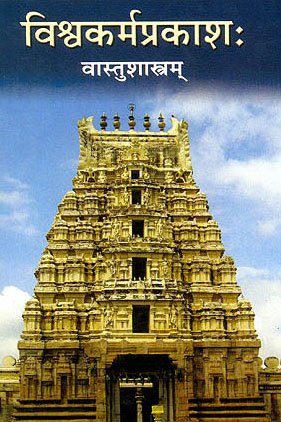Manikkavacakar, Māṇikkavācakar, Māṇikkavāsagar: 3 definitions
Introduction:
Manikkavacakar means something in Hinduism, Sanskrit, Tamil. If you want to know the exact meaning, history, etymology or English translation of this term then check out the descriptions on this page. Add your comment or reference to a book if you want to contribute to this summary article.
Images (photo gallery)
In Hinduism
Vastushastra (architecture)
Source: Shodhganga: Temples of Salem region Up to 1336 ADMāṇikkavācakar.—One of the four Nālvar.—Māṇikkavācakar is represented as wearing a turban, as he held the post of a minister.

Vastushastra (वास्तुशास्त्र, vāstuśāstra) refers to the ancient Indian science (shastra) of architecture (vastu), dealing with topics such architecture, sculpture, town-building, fort building and various other constructions. Vastu also deals with the philosophy of the architectural relation with the cosmic universe.
General definition (in Hinduism)
Source: Oxford Index: HinduismThe best-known and most revered Tamil Śaiva saint and bhakti poet.
Languages of India and abroad
Tamil dictionary
Source: DDSA: University of Madras: Tamil LexiconMāṇikkavācakar (மாணிக்கவாசகர்) [māṇikka-vācakar] noun < idem. +. A famous Śaiva saint, author of Tiru-vācakam and Tiru-k-kōvaiyār, one of four camayācāriyar, probably of the ninth century; ஒன்பதாம் நூற்றாண்டினராகக் கருதப்படு பவரும் திருவாசகம் திருக்கோவையார் என்பவற்றின் ஆசிரியரும், சைவசமயாசாரியர் நால்வரு ளொருவரு மான பெரிய.ார். [onpatham nurrandinaragak karuthappadu pavarum thiruvasagam thirukkovaiyar enpavarrin asiriyarum, saivasamayasariyar nalvaru loruvaru mana periyar.]
Tamil is an ancient language of India from the Dravidian family spoken by roughly 250 million people mainly in southern India and Sri Lanka.
See also (Relevant definitions)
Partial matches: Manikka.
Full-text: Varakunan, Tiruvacakam, Tiru-peruturai, Nalvar-nanmanimalai, Tiruvatavurar, Tiru-cirrampalakovai, Tiru-vatavurarpuranam, Calalpati, Nayaṉmar, Nalvar, Civapuranam, Bhakti.
Relevant text
Search found 7 books and stories containing Manikkavacakar, Maanikkavaasagar, Māṇikka-vācakar, Manikka-vacakar, Māṇikkavācakar, Manikkavachagar, Māṇikkavāsagar, Manikkavasagar, Manikkavasakar; (plurals include: Manikkavacakars, Maanikkavaasagars, vācakars, vacakars, Māṇikkavācakars, Manikkavachagars, Māṇikkavāsagars, Manikkavasagars, Manikkavasakars). You can also click to the full overview containing English textual excerpts. Below are direct links for the most relevant articles:
The Religion and Philosophy of Tevaram (Thevaram) (by M. A. Dorai Rangaswamy)
Nayanar 40: Poyyatimai illata pulavar < [Volume 4.1.1 - A comparative study of the Shaivite saints the Thiruthondathogai]
Chapter 2.4 - Candra-anugraha-murti (depiction of the moon’s redemption) < [Volume 2 - Nampi Arurar and Mythology]
Nayanar 10: Kannappa (Kannappar) < [Volume 4.1.1 - A comparative study of the Shaivite saints the Thiruthondathogai]
Middle Chola Temples (by S. R. Balasubrahmanyam)
Temples in Tirukkalar < [Chapter II - Temples of Rajaraja I’s Time]
Temples in Tirunedungalam < [Chapter II - Temples of Rajaraja I’s Time]
Temples in Attur < [Chapter II - Temples of Rajaraja I’s Time]
Hindu Pluralism (by Elaine M. Fisher)
Appendix: The Sixty-Four Games of Śiva
The invention of the Sthalapurāṇa of Madurai < [Chapter 4 - The Language Games of Śiva]
The Tiruviḷaiyāṭal Purāṇam in Seventeenth-century Madurai < [Chapter 4 - The Language Games of Śiva]
Early Chola Temples (by S. R. Balasubrahmanyam)
Temples in Tirumananjeri < [Chapter VIII - Temples of Uttama Chola’s Time]
Vision of the Sacred Dance < [April – June, 1984]
Reviews < [January – March, 1983]
Ananda K. Coomaraswamy’s Universalism < [October - December 1976]
Pallava period (Social and Cultural History) (by S. Krishnamurthy)
Shaivism during the Pallava period < [Chapter 3 - Socio-Religious Life]
